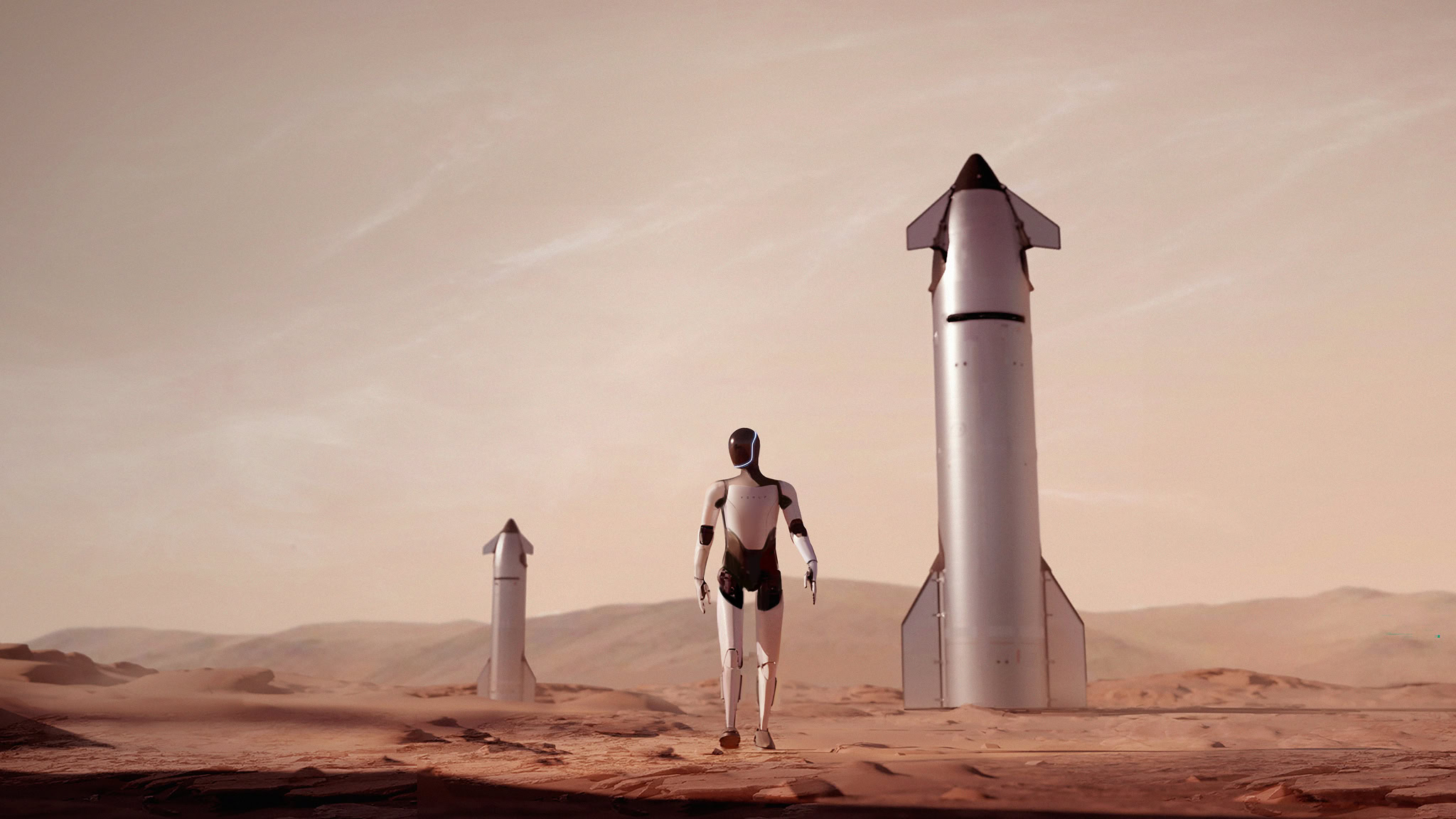Our Next Expedition in Space
We, as a spicies, are destined to go to space. Sooner or later. By the term, "we", I mean us. With ambitious programs like StarShip making orbital travel affordable, this is going to be the future.
Humanoids are destined for space
When we think of interplanetary exploiting, the most difficult part is the harsh environment of space - cold, vacuum, high radiation, and micro-gravity. In fact, micro-gravity is an advantage in terms of transportation and material crystalization. The first 3 factors, however, are not human friendly at all. The fact that we need breathable air makes it impossible to self-sustain a simple long-term base in any vacuum area (such as the Moon or a metal asteroid). Even so, it would require sophisticated in-space supply chain which is not practical in the short term.

Humanoids, on the other hand, don't need these. They can live as long as there's electricity. This can be a huge advantage as without atmosphere, the photoelectric conversion efficiency in space is way higher than that on Earth.
As you many argue, they still need to address the threat to radiation and temperature right? The answer is yes, but the same factors impede the current development of humanoids also pose challeges for humans out of flesh, which has far limited tolerance of both compared to robots out of electronics. From the perspective of a successful engineering or business model, the simplier approach for the task always prevails. If we ever attempt space expedition, which we already are, humanoids would be the first fleets on the Fram, paving the way for multiplanetary human exploration.
For any tasks beyond the range of real-time telecommunication, the agent on the task needs some sense of cognitive to make decision on its own. This agent can be a human, but since we would need tremendous amount of supplies to be brought with us, this is also not practical in short term either. Over the last few decades, we've seen successful missions to Mars and beyond, accomplished by robots (more precisely rovers and space probes) that are programmed to fulfill a given task. This is a typical engineering problem, as the way we used to address various unprecedented incidents (hardware failures caused by radiation interference, high-speed particle impact, etc.) is by adding redundencies, aka another machine (this can be a second computer, multiple backup sensors, actuators, etc.). This is still valid as a software-industry practice. However, the real challenge is, will the robot still perform as expected as the environment changes? Damage is inevitable, and it's impractical to send compensationary signals that takes minutes even hours of light speed travel from earth to a far distance. They would need to figure out themselves, whether by accompanied by congnitive beings like humans, or through local embedded algorithms.

I think topics like these are partly the reasons that drive me to my current project - using quality diversity reinforcement learning in damage recovery in robotics. Not only do I firmly believe that there's a potential in addressing the fundamental problem of environmental adaptation in robots, but also a rather optimistic view in the space expedition.
Microgravity as a service
While interplanetary expedition sounds like a distant future (though I reckon it'll happen in less than 10 years), it's more feasible to market the orbital space, by simply leveraging the benefits of speed, vacuum and microgravity. Point to point travel on earth will become common, as starship flights between large cities(i.e. New York, London, Shanghai) will replace high-end commercial flights at a reasonable price(prob. thousands of USD) with 10th-fold of travel time. Admit it or not, it's just a matter of time and not something of particular interest of this section. What we're really interested, is the potential in manufacturing.
Microgravity betters cystallization. In other words, materials can be produced with higher purity, meaning the reduction of purification procedures, thus reduces cost. Companies like Varda, have already started to leverage microgravity to produce high value density crystals like drugs or proteins. Items that require higher cystallization requirements, such as silicons, are also among interests.
Solar energy is all we need. Energy shouldn't be a problem, because the only cost would be the installation of solar panels, which is a one-time cost, and its amortization cost is marginal. There's a trade-off, however, between the high orbiting speed in low-earth orbit and the rapidness of deorbiting caused by air drag, which is something to consider in developing the business model. As the latter will require additional refilling cost of fuels to raise the orbit of the vehicle.
Shipping can happen right after production with max speed and little cost. The emergent of space factories remove the need for a constructed facility in one earth region, and drastically reduce delivery time from months(common overseas ocean shipping) to hours. The dispatch will be fully automated, with dispatching capsules sending package to different orbits. The only cost would be the return capsules, as most modern designs are still using ablative materials, meaning they're expendable. Once the delivery vehicle masters the ability of reusability, business obstacle resolved.
Back in the days we thought the space is a sci-fi dream, it's not. Sometimes, it's interesting to joke about that there's less distance to travel vertically than horizontally. As a space enthusiastic, it's thrilling to see the progress of Starship, Varda, New Glenn and any other projects. For millions of years living in the well of gravity, we dream of reaching to the stars. With the uprising of the space industry, we're finally, one step closer.